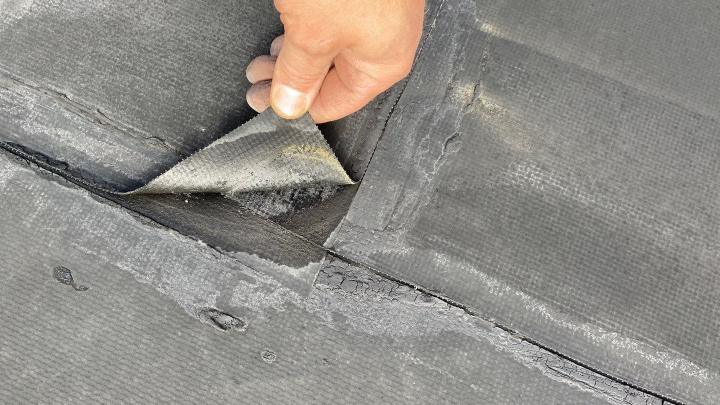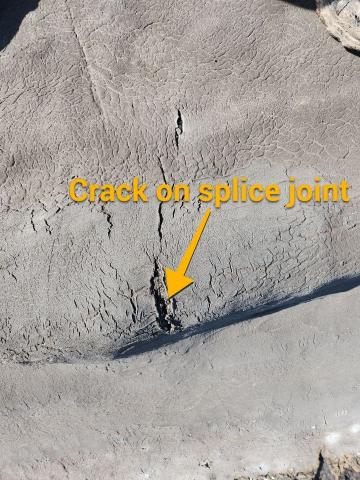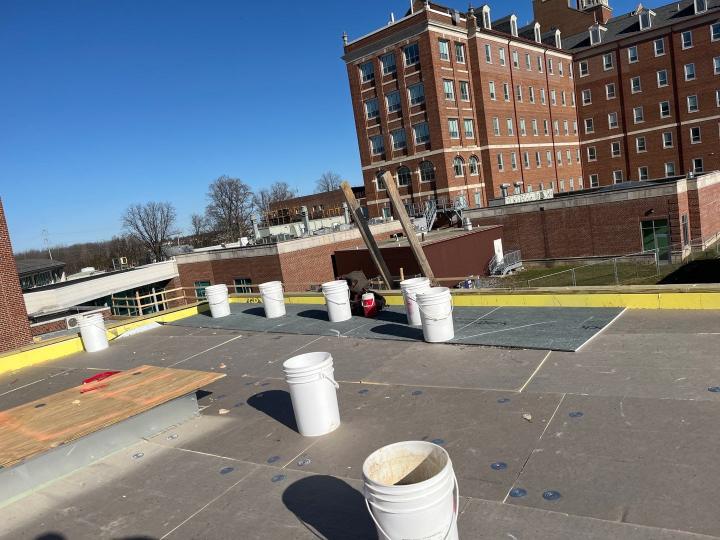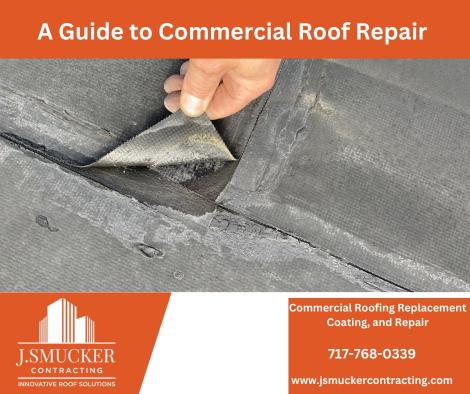- By admin
- Roof Repair
- 0 Comment
Commercial Flat Roof Repair
Encountering a leaky roof is usually pretty high on the list of last things a business owner or building manager wants to deal with. Not only can the source of the leak be difficult to find, but it can also result in significant damage to your property’s worth and structural integrity if not dealt with correctly and quickly. While all roof leaks pose a problem, a leak in a commercial flat roof presents unique difficulties.
Commercial flat roofs, also called low sloped roofs, can be either relatively straightforward or exceptionally challenging; requiring complex reconstruction and expert guidance for insurance claims. In this article we’ll cover all the ins and outs of commercial flat roof repair; with the hope that you’ll walk away with a better understanding of new terminologies, repair processes, and costs associated with flat roof repairs.
To start off, let’s define our terms. From a contractors point of view, there’s basically two “types” of repairs when it comes to commercial flat roofing systems. There are what we would classify as proactive repairs and emergency repairs
Emergency Roof Repairs
Emergency repairs are fairly self explanatory. You have water coming down through your ceiling and into the building and need the issue fixed immediately. These repairs are either the culmination of years of neglect and obsolescence, human error, or they could be the result of storm damage where, for example, a heavy limb has fallen and punctured the roofing material.
Proactive Roof Repairs
Proactive repairs are usually done ahead of any known issues with your roof. They are geared more towards upkeep and preventative maintenance protocols. That being said, proactive roof repairs don’t necessarily mean that there isn’t water leakage happening within the roof. Proactive roof repairs are done when there are issues that could potentially lead to larger issues down the road. For example, a building could have edge metal that has pulled up in a certain area, and sooner or later, heavy rain blowing horizontally will have the ability to find its way into the building and cause damage. As such, having a good preventative maintenance package is very important on larger commercial buildings.
Besides regularly scheduled maintenance, a good maintenance contract should also cover a small amount (at least) of proactive or emergency repairs. Although at a very minimum, the goal of proactive roof repairs entails your roofing contractor getting out ahead of the small issues that tend to develop into larger ones.

Regular maintenance inspections are absolutely necessary - they help stop small issues from turning into much larger systemic ones.
How much does it cost to fix a flat roof?
This is usually the biggest question on a building owner or manager’s mind whenever issues arise with their roof. As with most things, the answer is not as simple as most would like it to be. When it comes to hiring a commercial roofing contractor, there are multiple ways the contracting companies will price out commercial roof repair. Let’s run through the main ones to dive a bit deeper into pricing scenarios.
Flat Rate Pricing
Every roofing repair has a flat rate tied to it. With flat rate pricing, right out of the gate, a company will charge a flat rate to come out to the building and examine the issue. This price can range anywhere from $300 to $600. After the contractor looks at the roof, they give you a flat rate estimate that gives you a specific pricing breakdown. You’ll see a breakdown with the specific repairs needed and an associated cost of each.
Time and Materials
“Time and materials” is another way roofing contractors will price out roof repairs. Basically, the company will charge you X amount per hour, the amount of time the repair took, and then the materials used.
Not to Exceed
Another popular way contractors price out their repairs is referred to as “not to exceed”. With this method, the roofing company will not charge you to come to your location and provide a repair estimate; which can be a benefit. The contractor will arrive on location, take a look at the situation, and come up with a general idea as to where the leaks are coming from and what the repair will entail. The potential customer is then given what’s called a ‘not to exceed total’.
The ‘not to exceed total’ will stipulate a price range of what the repair will cost. For example it could stipulate that repair in question could be as low as $1500 or as high as $8,000 – or it could be anywhere in between or higher.
The benefit of the ‘not to exceed total’ to the customer is that
- You’re getting the benefit of time and material – so you’re not overpaying for certain things. For example, flat rate pricing has a flat rate. However if the contractor finishes the job very quickly, the contractor still makes that money; whereas ‘time and materials’ is a situation where you’re only paying for what you’re getting.
- You’re additionally getting the benefit of an exact ‘price ceiling’. The contractor lays out his hourly rate and the ballpark of what the repair will cost. The additional benefit is that the contract lays out a threshold dollar amount which he will not exceed in charging you for – without having that discussion first.
Generally, it’s our contention that the not to exceed total puts the customer in a lot more control by not paying for anything you’re not getting as well as not overpaying for a repair job that for whatever reason ends up coming below the flat rate on the contractor’s end.
Here at J Smucker Contracting, we generally price repairs using the not to exceed total as we have found that it’s a pricing format that works in our customers best interests.
Lastly, to give an exact price can be difficult to say without knowing what the scope of any repair would be. However, for the benefit of this article and to allow you to walk away with some idea of what to expect – an average price for an average repair (a puncture in the roofing membrane, for example) is usually in the range of $700 to $1,000, including materials and time. Keep in mind that this estimate is for one puncture, at one specific location where the contractor is cutting out the area, patching it, taping and sealing it.
How do you find a leak in a commercial roof?
Oftentimes, finding a leak in a commercial roof can be more difficult than finding a leak in a residential roof. One of the problems is that fairly often, it can be difficult to know where in the underside of a roof the issue is. Therefore, the easiest place to start is to find where the roof is showing leaks and work backwards from there.
One issue with finding the cause of a leak is that if you’re not dealing with a drop ceiling or an open roofing system, it can be tough to really get in there and find the culprit. Commercial roofing systems can be complicated with a myriad of layers. Many times a leak can be showing in one place within the building, but the issue can be emanating from 15 feet away! Water takes the path of least resistance. Where water comes in and where water finally presents itself can be much farther than one might expect. Additionally, very often you’re not going to figure that out in the hour or so it might take for a contractor to give you the estimate.
Professional Roofing Contractors are Usually the Best Bet
When looking for a leak in a commercial roof, it’s much better to approach the issue from a technical perspective that a roofing contractor would understand holistically. It’s better to see the whole roof from the roofing membrane and system that it is and truly look well past where the water is coming from inside the building.
A helpful guide to fixing leaks is to view it with a 20 foot by 20 foot perspective. Which is to say that wherever the water is presenting itself, a good contractor can go out 20 feet in circumference and fix everything in that area. You’re usually safe with this rule of thumb in assuming that the water is not traveling any more than that with any given membrane disruption or puncture.
Our own “not to exceed” repair contracts at J Smucker Contracting follow this exact rule of thumb. We find the main source or culprit of the puncture – the area where the leak is presenting itself- and then work our way out 20 feet in circumference and fix any issues in that area. This is how any competent roofing contractor should be truly fixing a leak and not just making repairs.

Most of the time it's the seams or the caulking around the penetrations that will fail first - causing leaks
How do you repair a commercial flat roof?
Once you’ve diagnosed what the issue is, the repairs can vary based on the type of flat roof, i.e. EPDM, PVC, TPO. With the exception of a foreign object dropping on the roof, such as a screwdriver from the HVAC guy, a branch, or hale, the issue with a leaking roof is usually some type of seam or penetration issue. The roofing membrane itself lasts a long time. It’s usually either the seams that will fail first or the ‘boots’ around the penetrations that fail – the caulk cracking eventually.
For more information on flat roof materials, read our previous article The 4 Best Flat Roof Materials
To repair these issues, you start with cutting out whatever is failing, replace the material, then patch it and seal it – this is done through tapes and caulks. Even if it’s a foreign object, it’s the same process. You need to cut out what’s failing, replacing it with fresh membrane and then taping and caulking that in. If the issue is located around the ‘boot’, you may have to replace the boot or simply re-caulk the area. Keep in mind that this is a general overview and the most generic way to replace and repair a roofing tear.
Should I repair my commercial roof myself?
The best answer is no, and this is for many reasons. The first reason is the obvious safety issue. Professional roofing contractors are trained to be climbing up on ladders and engaging with 5+ story roofs day in and day out.
Secondarily, commercial roofing repair contractors have access to roofing materials that the average person does not have access to. There is a big difference between the painters caulk you find down aisle 3 at home depot and the product contractors buy from their certified roofing product manufacturers. Also, the wrong type of materials can void your roofing warranty (if it’s still under warranty). Using the wrong type of caulk on the roofing membrane for example, on a repair you decide to do yourself can get void what otherwise would have been many years in additional warranty coverage (For more information on commercial warranties you can read our article “A Guide to Commercial Roofing Warranties”). Simply put, the roofing materials the average person has access to and the materials a professional contractor has access to are greatly different, so in almost all cases it just doesn’t make sense to try and repair a commercial flat roof yourself.
The last aspect of why a building owner or manager shouldn’t repair the building themselves is that they are going to have tunnel vision. The average person simply does not have 20 years of leak detection and repair experience to fall back on, which means they’re going to take the simplest approach to fixing a leak they can. And that usually results in a haphazard job which can very often miss crucial steps in both leak detection and repair.

Commercial roof repair can be a daunting task. Beyond the myriad of processes involved, repairing a roof yourself could invalidate the existing warranty.
Conclusion
Repairing a leak on a commercial building can be a daunting task. While some repairs are straightforward, others are not. If you encounter an issue on your building that requires maintenance, it’s best to have a commercial contractor examine and address the issue. If you have any additional questions on roof repair or maintenance packages, feel free to give J Smucker Contracting a call. We look forward to working with you!

